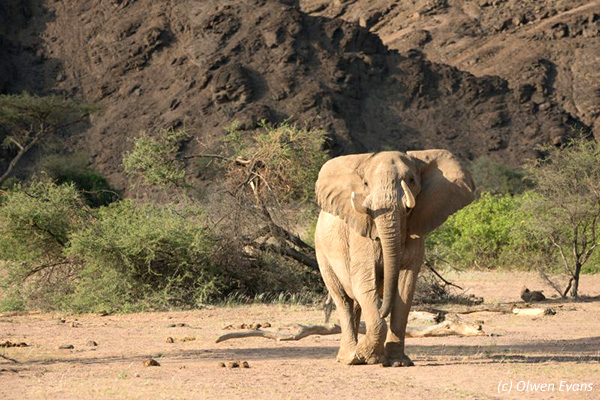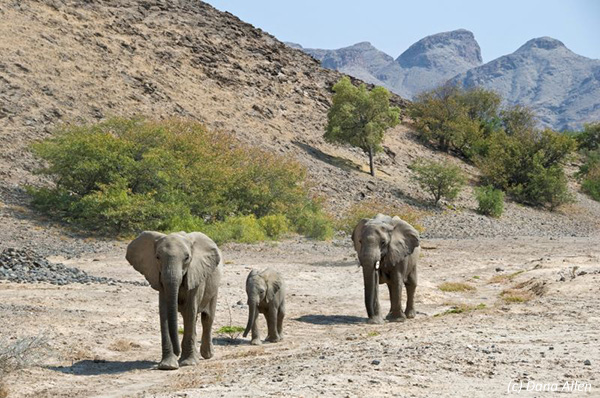Desert Adapted Elephants
In habitats with sufficient vegetation and water, an adult elephant consumes as much as 300 kg of roughage and 230 litres of water every day of its life. Consider what a herd of them would eat and drink in a week or a month or a year! So finding an African elephant in a desert, really? Well, yes, and not only elephant, but other large mammals as well, such as black rhinoceros and giraffe.
Their ranges extend from river catchments in northern Kaokoveld as far south as the northern Namib. Apart from the Kunene River, seven rivers course northwards from the Ugab and provide them with possible routes across the desert, right to the Skeleton Coast. The biggest are the Hoarusib, the Hoanib, the Huab and the Ugab Rivers. Desert adapted elephant in Kaokoland and the Namib walk further for water and fodder than any other elephant in Africa. The distances between waterholes and feeding grounds can be as great as 68 km. The typical home range of a family herd is larger than 2,000 sqkm, or eight times as big as ranges in central Africa where rainfall is much higher. They walk and feed at night and rest during the day.
Not a separate species or even a subspecies, they are an ecotype unique to Namibia and behaviourally adapted to hyper-arid conditions. Elephant in Mali on the southwestern fringe of the Sahara Desert are the only others known to survive in similar conditions.




